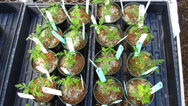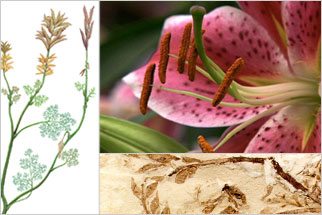Flowers Modern & Ancient
- By Susan K. Lewis
- Posted 04.17.07
- NOVA
Archaefructus liaoningensis would never have made the cover of Better Homes & Gardens. But this 125 million-year-old plant, discovered in fossil beds in northeastern China, did grace the cover of Science. It's heralded as the earliest known angiosperm, or flowering plant. Here, explore what makes Archaefructus a flowering plant and how it compares to blooming beauties of today.
Credits
Special Thanks
- David Dilcher, University of Florida
Image Credits
- (modern lily)
- Doug Hamilton © NOVA/WGBH Educational Foundation
- (Archaefructus liaoningensis)
- Courtesy of Doug Hamilton
- (Archaefructus sinensis)
- Courtesy David Dilcher and Sun Ge
- (reconstruction of A. sinensis)
- Courtesy K. Simons and D. Dilcher
- (fossil of A. liaoningensis)
- Courtesy Doug Hamilton
Related Links
-

A Plant With Smarts
Susan Orlean, author of "The Orchid Thief," muses about the orchid's "clever and unplantlike determination to survive."
-

Plants with Family Values
Scientists find that plants can act altruistically toward their siblings.
-

A Brief History of Life
An overview of the history of life on Earth, from the earliest bacteria to the first modern humans
-

First Flower
Learn how to isolate DNA from bananas.
You need the Flash Player plug-in to view this content.


